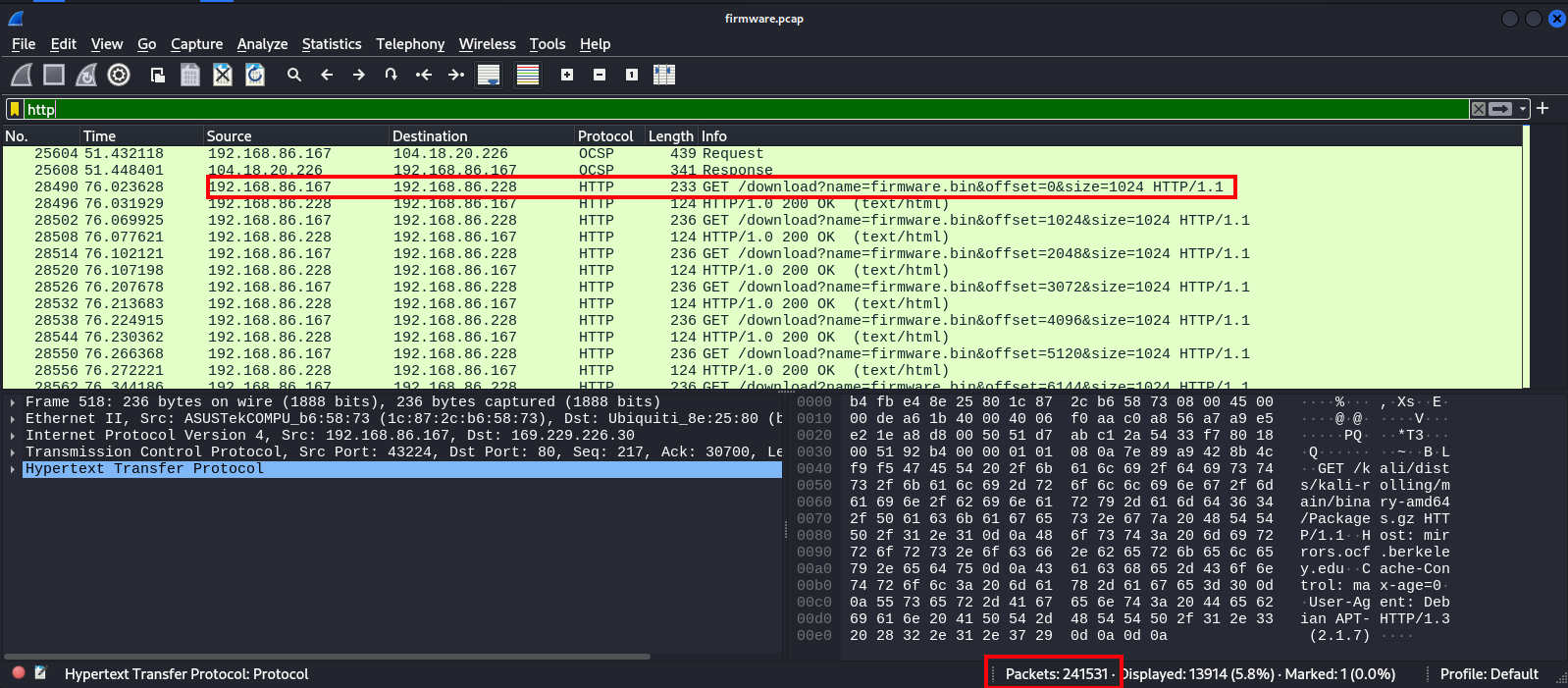2.3 KiB
Homework 3: Find the firmware
We start by copying the firmware capture file from ada to our machine
Reverse Engineering
First lets open this capture up in wireshark and do a high level overview
Wireshark overview
Knowing we are ultimetly looking to re-construct a firmware download, we can discern some important info from wireshark
- There are 241,531 packets in this capture, but only some are the traffic directly related to this download
- Client of the download is 192.168.86.167 and server origin is 192.168.86.228:5000
- The download is split over multiple HTTP requests by the shown convention, which themselves are split over multiple TCP requests
A starting point of a BPF might look like tcp and src host 192.168.86.228 and src port 5000 and dst host 192.168.86.167
As a wireshark filter, this would be tcp && ip.src == 192.168.86.228 && tcp.srcport == 5000 && ip.dst == 192.168.86.167
Scapy
I wrote a python scapy script will help us work with this capture file to assemble the .bin from the raw response of the relevant TCP packets. This script is shown in ./app.py. Our script will confirm the extracted binary matches the following checksums
MD5: 7aa6a7ebcbd98ce19539b668ff790655
SHA256: 2a7719719aa4f869586a7043f532e01ed4985e5c25b9a54979ac7d50c67820ec61c2805d6169b9c95a98104b8fb1d4f9ec698d23881360e99f5232a4f3cf12d4
When writing this script I had to dig deeper into the packet capture to understand how the content was being transmitted. As it turns out, in the interesting response packets noted above, base64 encoded data was contained accross a pair of TCP responses for every HTTP request in the session. The first packet of this pair contained content after \r\n\r bytes were appear in the raw data. The second packet of the pair was the immediete next packet in the TCP session, and all of its raw data comprised the rest of this chunk. I wrote a loop on the filtered packet list which was able to extract and compound the overall payload with this technique. As we see, we produce a download.bin with the proper hash and we can move on to exploring it
Questions
- What architecture is the firmware intended to run on?
- What OS is the firmware running?
- What users are present on the system?


